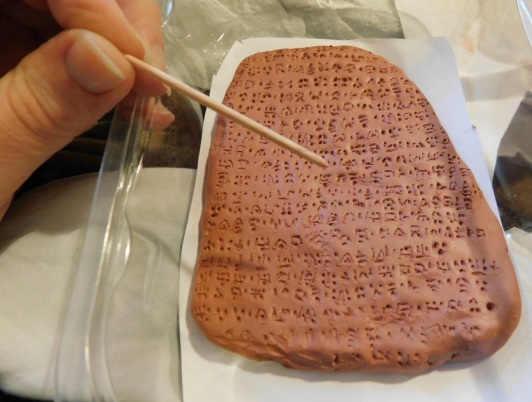This term has been Cyprus term at the CREWS project. We have been very lucky to have two Visiting Fellows with us – Cassie Donnelly and Giorgos Bourogiannis – who are Cypriot specialists and are working on different aspects of writing in ancient Cyprus. It also happens to be the time of year when we run a seminar where we teach and discuss a particular ancient writing system. So of course we chose Cypro-Minoan, the script of Late Bronze Age Cyprus, for our seminar theme, and you may not be surprised to hear that some practical experimentation was involved… and indeed some themed cake and chocolates!










